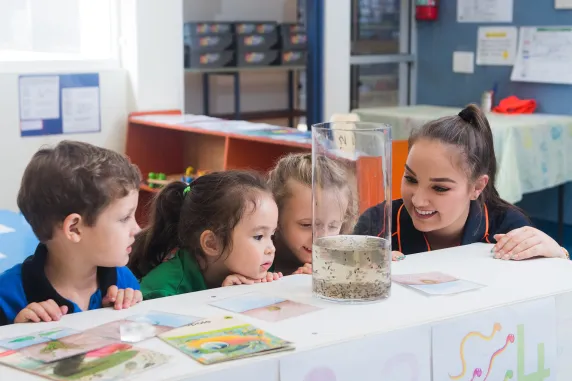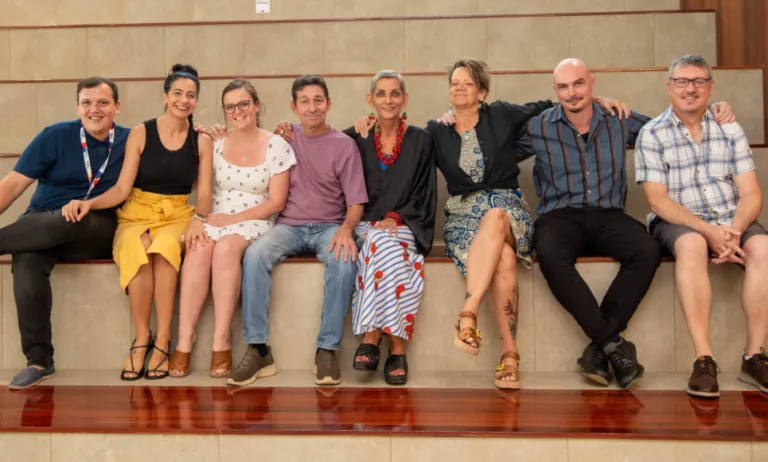Studying a childcare qualification requires a mix of practical skills, theoretical knowledge, and time management. At CDU TAFE, you can study a Certificate III or Diploma in Early Childhood Education.
The Certificate III is the minimum requirement to work in Early Childhood, and the Diploma is for those wanting to be Room Leaders or Centre Directors. The diploma course requires more depth of knowledge, critical thinking and possibly complex client needs.
Aims of the page:
- To build skills on breaking down case study questions into key words and ideas
- To gain practical reading and writing skills
- To complete workplace documents accurately
Download this summary sheet for your own records.
Becoming a student of Early Childhood Education and Care
Understanding and applying childcare policies such as the Early Years Learning Framework (EYLF) and the National Quality Framework (NQF) is an essential part of your professional development in early childhood education. These frameworks serve as the foundation for delivering high-quality care and education in Australia, guiding educators to create learning environments that are nurturing, inclusive, and conducive to child development.
In this section, we will explore how to effectively engage with these frameworks by breaking down complex policies into key concepts such as learning outcomes, principles, and practices. You will learn how to identify and summarise essential sections, highlight keywords, and apply these frameworks to real-life childcare settings.
Certificate III vs Diploma of Early Childhood Education and Care
While a Certificate III focuses on foundational knowledge and practical skills, simpler case studies and the ability to recall information for routine tasks, the Diploma course requires more depth of knowledge, critical thinking and possibly complex client needs. Whereas a Certificate 3 focuses on foundational knowledge and practical skills, simpler case studies and the ability to recall information for routine tasks.
Here's a comparative table:
| Feature | CHC30121 Certificate III in Early Childhood Education and Care | |
| Duration | 6 to 12 months | 12 to 24 months |
| Locations | Alice Springs, Palmerston, Katherine, Remote | Alice Springs, Palmerston, Katherine, Remote |
| Work placement | 160 hours of work placement required | 280 hours of work placement required |
| Course content | 17 units of competency (15 Core, 2 Elective) | 15 units of competency (12 Core, 3 Elective) |
| Nominal hours | 1188 hours | 1348 hours |
| Assessment methods and question types | Focuses on practical assessments (e.g., case studies, practical demonstrations); mostly practical-based assessments, multiple-choice, short-answer questions. | More complex assessments including case studies, project work, and written assignments including essays, long-answer questions, and reflective reports. |
Early Years Learning Framework (EYLF) /National Quality Framework (NQF)
You need to read and understand childcare policies (like the EYLF and the NQF) and use them in real-life situations. To understand them, you need to pick out key ideas, find important words, and see how they apply to your work. This is because they provide the foundation for quality childcare and early childhood education in Australia.
You will need to know how to break down complex policies into key concepts – like learning outcomes, principles and practices, how to highlight and summarise important sections and look for keywords and definitions. You will need to identify how EYLF principles apply to everyday childcare settings and link these frameworks to child development theories.
At diploma level, you might need to compare the EYLF and NQF with state and national laws to ensure compliance and learn how to reference frameworks correctly for your assignments.
Click through the images below. Keep these in mind when you are reading your Early Years Learning Framework. For more tips and tricks for reading and writing, please visit our Reading at University page.
Download these slides below.
Case Study Questions
The scenario below is an example of a case study question you may come across on your course. To answer a question like this effectively, an educator must understand child development, observe carefully, think critically, solve problems and apply appropriate strategies. You should also have a good understanding of childcare policies and procedures.
Completing workplace documents
In an Early Childhood setting, completing workplace documents accurately and professionally is essential for maintaining clear communication between parents and staff, ensuring child safety and meeting legal requirements. To complete documents effectively, always use clear, factual language and avoid opinions or assumptions. When completing incident report forms, describe what you saw and heard rather than interpreting behaviour. Information must stay confidential, following both workplace policies and legal guidelines to comply with early childhood standards. Proofread your documents, or ask your supervisor for help if you are unsure.
Incident report
As an early-years educator you are required to complete an incident report if a child in your care has an accident. You have a duty of care to protect children from harm, provide a safe environment and manage accidents. You must inform the parent and complete the form within 24 hours of the incident. Contact can be through phone call, email or the centre app.
Click on the hotspots below for detailed information on how to complete the form, then read through the scenario and try completing the form yourself. Check this against the completed form to see if you missed anything.
Observational record
As an educator, you will regularly complete observation records as part of your role in a childcare centre. These records help track a child's developmental progress, ensuring they are meeting developmental milestones and receiving extra support if needed. Observations also help educators plan individual activities based on the child’s interests and keep families updated on their child’s growth. Additionally, observation records are required to meet the Early Years Learning Framework (EYLF) and maintain compliance with quality standards.
There are different ways to observe children in an Early Childhood Learning Centre, and some methods will be easier and quicker than others. For example, taking photos and uploading them to the Centre App is a fast way to keep parents updated. Other observations take more time and can be more difficult for educators to complete.
The video below explains the different types of observations you may need to do and provides an example of an anecdotal record, which is the method you will use most often.
Print out the template before starting the activity, as you will need it.
Applying your learning
Reflect on what you have learned in this material and consider how you can use it in your workplace and your studies.
Next steps
- Next time you are asked to complete a report at work, refer to this page to help you.
- Practice observing children as they play, taking brief notes on their interactions and how this can link to developmental milestones and EYLF outcomes.
- Experiment with voice-to-text software to make note taking easier.
Don’t’ forget to ask your lecturer or a Language and Learning Advisor for more information.
If you would like more support, visit the Language and Learning Advisors page.
We value your opinion. Please click on the button to share your feedback on these materials. |
Did you know CDU Language and Learning Advisors offer a range of study support options?
https://www.cdu.edu.au/library/language-and-learning-support



